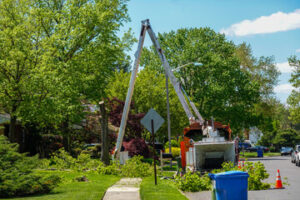Ceilings occupy a considerable amount of space in a room and provide insulation and soundproofing. They inevitably experience wear and tear and need regular maintenance to avoid structural damage or mold growth that can threaten the safety of occupants.
Water-damaged ceilings are high priority issues that can lead to rot, mold and weaken the house frame. Sagging or pillowing ceilings should be repaired immediately to prevent collapse. Contact Ceiling Repair Perth now!

Drywall is in almost every home and office, but few people really know what it is or where it comes from. Known by many names — Sheetrock, wallboard, plasterboard, gypsum board, buster board and slap board — this material is an integral part of walls and ceilings that often get overlooked in terms of care and maintenance.
If the drywall has minor scratches or dents, you can fix them with spackle or lightweight joint compound (also known as mud). Apply a layer to the affected area, using a putty knife designed for drywall repair, and smooth it over the surface until it blends in. Apply a second coat, and again smooth it. Let the second coat dry and sand it lightly, and you’re ready to prime and paint.
Cracks and holes are more difficult to treat. If a crack extends more than an inch, you’ll need to replace the damaged section of drywall. A replacement piece should be a bit larger than the hole in order to conceal it, and it should also be supported by strips of wood that are installed inside the corner on either side.
When two pieces of drywall meet at an outside wall corner, they’re protected by an L-shaped metal strip called a “corner bead.” This bead helps prevent water damage to the surrounding drywall. Over time, however, the bead can become dented by running a vacuum over it or by a child flinging a toy at the wall. When this happens, you can usually smooth out the ding with a 3- to 4-inch putty knife that’s specifically designed for repairing drywall.
Nail or screw pops are often caused by lumber shrinkage. To prevent the nail or screw from popping out again, twist a utility knife into the center of the popped fastener to carve away a bit of the joint compound around the head of the fastener. Then, firmly tap the nail or screw into place with a hammer.
If the hole is accompanied by a ridge of gypsum along the edge, you can use self-adhering mesh tape to cover the ridge and avoid future problems with drywall seams. After applying the tape, sand the edges of the patch to smooth them out and make them blend in with the surrounding drywall.
Patching
Your home’s walls require routine care to stay sturdy and attractive, but your ceiling may need more attention than you think. Cracks, water damage and other issues are not only unsightly but can lead to costly structural repairs and health-related problems. Keeping on top of your ceiling repair can prevent these issues and ensure a fresh look that enhances your home’s interior design.
Before attempting to repair or patch a drywall ceiling, make sure you have the proper tools and materials. A step ladder and a pair of gloves are a must, along with safety goggles that fully cover your eyes. If you have a large area to repair, it may be best to purchase a piece of drywall at a home improvement store to cut the patch from instead of trying to make it from scratch.
Once you’ve cut away the damaged section of your ceiling, it’s important to dry out the area as quickly as possible. The longer water sits in the drywall, the more likely it is to start mold growth and cause other issues. If you have an attic vent above the damaged area, you can use a fan pointed at the ceiling to help speed up the drying process.
If there is a significant amount of water damage, you may need to remove and replace your ceiling. This is an advanced project that requires professional experience, but can save you a lot of money in the long run. A professional can assess the extent of the damage and recommend the right solution for your home or business.
After repairing the drywall, you’ll need to patch the area with either Spackle or joint compound. If the damage is very small, you can opt for Spackle, but for larger areas it’s best to use joint compound.
Once your patch has been sanded and sprayed with a primer, you’re ready to paint it. Apply two or three coats of the primer and wait for it to dry before reapplying your textured paint.
Ceiling repair and restoration is essential for a healthy and beautiful home or business. Whether it’s removing water damage or restoring old textures, these processes can transform your space and give your property a fresh new look. When done correctly, these projects can also protect your property from serious problems, such as structural damage and mold growth.
Cutting Out
If large sections of a ceiling need to be replaced or removed, it will cost more than just patching. A licensed repair professional will need to work with a team of professionals to remove the damaged sections, replace them, and then install any insulation needed. This is a job most homeowners cannot do themselves and should be left to the professionals.
Ceiling leaks are a high-priority issue that should be repaired as soon as possible to prevent water damage and rot in the house structure. The cost to fix a ceiling with a leak ranges from $500 to $2,000, depending on the location and size of the leak, and whether a new pipe is required. It also depends on the length of time the ceiling was exposed to water and how much damage it suffered.
A damp or wet ceiling can lead to mold and rot, which costs extra to fix. If the dampness is confined to one area and does not have a brown color to it, the problem may be caused by condensation and can usually be fixed with extractor fans or dehumidifiers. But if it is widespread, or if the water stains are accompanied by a musty odor, there is likely a hidden leak in the ceiling that needs to be addressed immediately.
Cracks in a ceiling are often an indication of other problems, including structural and foundation issues. For example, a cracked ceiling could indicate rotting joists or beams from the floor above that need to be repaired. Large cracks in a ceiling are expensive to fix and can lead to drywall that will need replacement.
Popped drywall seams aren’t as expensive to repair, but they can create an unsightly appearance. Repairing popped seams requires removing the existing drywall and repairing the drywall underneath it. For this reason, it is often more economical to hire a professional to do the repairs instead of trying to DIY the job.
Another type of ceiling repair involves the addition of texture. This costs between $500 and $1,500 and adds a new aesthetic to a room. Several types of textures are available and homeowners should discuss these options with their repairman or painter. Adding texture can also hide imperfections that are not easily fixed with a patch, such as a sagging ceiling.
Painting
Painting a ceiling can be tricky, but it is also important. It’s often ignored or given short shrift in a paint job, but careful planning and preparation can make it the highlight of your room.
To start, clean your ceiling with a mixture of hot water and a little bit of detergent (like Selleys Sugar Soap). Wipe away any remaining dirt or grime. If you’re using a darker color on the ceiling, it might help to lightly sand the surface first to get rid of any bumps or blemishes that have built up.
After your ceiling is clean, you should tape around cornices and edges of the ceiling and cover any down lights or fixtures to protect them from paint. It’s also a good idea to remove any furniture that might be in the way. Once you have everything prepped it’s time to start painting. If you’re using a roller, work in 4×4 foot sections to keep the area from drying out too quickly. When you start a new section, be sure to roll over the previous one without lifting it to avoid lap marks. This will give you a smoother coat of paint and prevent streaking.
If you’re painting over a textured ceiling, it may take multiple coats to get a smooth finish. If you’re worried about the texture cracking, try a test patch in an inconspicuous spot before moving forward with the project. It’s also a good idea when working with textured surfaces to use a brush for the first pass, then switch to the roller for the final coats of paint. The textured surface will stick to the bristles of your brush and help minimize any paint dripping from the wall.
One of the most common mistakes that homeowners make when painting a ceiling is skipping over steps. By neglecting to sand or patch, by not taping correctly or by applying a second coat too soon, you’ll wind up with visible lines on your ceiling that won’t disappear. By following these tips and taking your time, you’ll be able to avoid these common mistakes and ensure that your ceiling looks beautiful.








